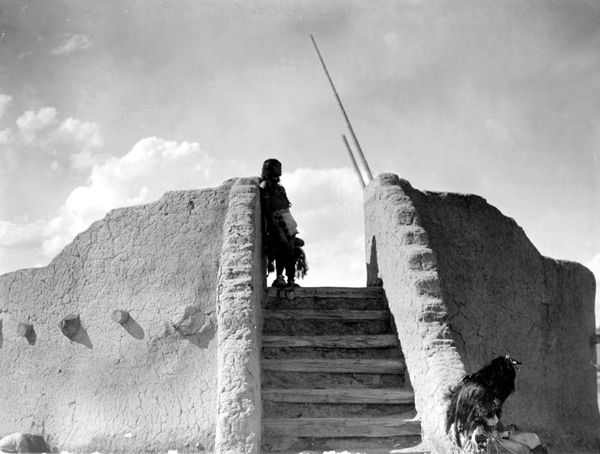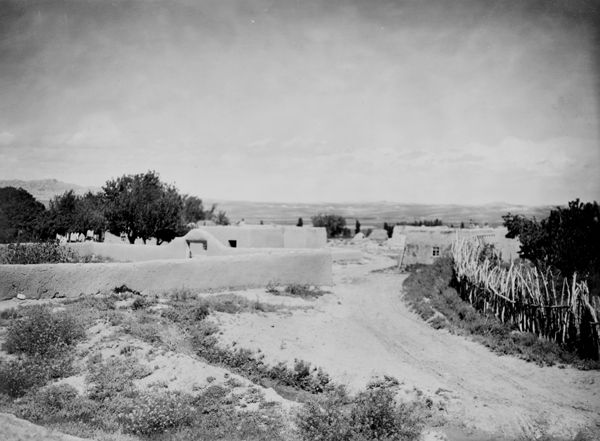
The Shadow of Gold and Steel: The Tiguex War, America’s Forgotten Founding Legend
America’s tapestry of legends is rich and varied, often conjuring images of pioneering spirit, rugged individualism, and the westward expansion. We speak of Paul Bunyan, Johnny Appleseed, the Alamo, and the mythic cowboys of the Wild West. Yet, beneath these familiar narratives lies a stratum of older, darker, and often deliberately forgotten legends – stories that speak not of triumph and exploration, but of the brutal, foundational clashes that shaped the continent long before the Stars and Stripes fluttered. Among these, the Tiguex War of 1540-1541 in what is now New Mexico stands as a chilling, prescient legend of America’s earliest violent encounters, a forgotten crucible of conquest and resistance.
This is not a legend born of mythical beasts or heroic quests, but of blood, betrayal, and the stark reality of cultural collision. It is a legend in the truest sense: a foundational story, often overlooked in mainstream historical narratives, yet one that profoundly shaped the future trajectory of a continent and its peoples. It speaks to the origins of the fraught relationship between European newcomers and Indigenous inhabitants, setting a grim precedent for centuries of conflict to come.
The Allure of Cibola and the March of Coronado

Our story begins in 1540, two generations before Jamestown and nearly a century before the Pilgrims landed at Plymouth Rock. Francisco Vázquez de Coronado, a young, ambitious Spanish nobleman, led one of the most audacious and expensive expeditions in New World history. Driven by tales of the Seven Cities of Cíbola – fabled cities of gold and unimaginable wealth – Coronado assembled a formidable force: some 300 Spanish soldiers, including cavalry, infantry, and artillery, along with an estimated 1,000 to 2,000 Indigenous allies, servants, and enslaved people, and thousands of livestock. This was not a small exploratory party; it was a mobile city, a veritable invasion force.
Their arduous journey took them from Compostela in Nueva Galicia (modern-day Mexico) through vast, inhospitable deserts and mountains, following the path of earlier, less successful explorers. The mirage of golden cities shimmered just out of reach, fueled by exaggerated accounts and desperate hope. When they finally reached the Zuñi pueblo of Hawikuh, the first "City of Cíbola," they found not glittering gold but modest adobe dwellings. The disappointment was palpable, but the search for riches continued.
Pushing eastward, Coronado’s expedition eventually reached the fertile valley of the Rio Grande in what is now central New Mexico, a region densely populated by the Pueblo peoples. Here, along the river, lay the villages of the Tiguex, a Tiwa-speaking group whose sophisticated agricultural societies had flourished for centuries. These were settled, peaceful communities, living in multi-story adobe structures, cultivating corn, beans, and squash, and possessing rich cultural traditions. They had no concept of the European thirst for gold or the brutal tactics of conquest that accompanied it.
Winter Quarters and the Seeds of Conflict
As winter approached in late 1540, Coronado’s massive expedition needed to establish winter quarters. The Tiguex province, with its abundant food supplies and established villages, seemed an ideal location. The Spanish, accustomed to imposing their will, "requested" (a euphemism for demanded) that the inhabitants of one of the larger pueblos, Coofor, vacate their homes to make way for the conquistadors. The Pueblo people, initially intimidated by the sheer number of armed men and strange animals, complied. This initial act of displacement, though seemingly peaceful, laid the groundwork for resentment.
The chronicler of the expedition, Pedro de Castañeda de Nájera, a soldier who participated in the events, provides invaluable, if biased, insight. He described the initial interactions as tense but functional. However, the needs of Coronado’s large force – particularly for food, clothing, and shelter – quickly strained the relationship. The Spanish soldiers, many of whom were of low social standing and had little to lose, began to take what they wanted, often without compensation.
The spark that ignited the full-blown conflict was multifaceted but rooted in a pattern of escalating abuse. Castañeda recounts several key incidents:
- The Blankets: Coronado ordered his soldiers to collect 300 or more cloaks (woven blankets) from the pueblos, ostensibly to clothe his men for the harsh winter. This was a significant imposition on the Pueblo economy and a blatant disregard for their property rights.
- The Woman: Perhaps the most egregious act, and one that deeply offended the Tiguex people, involved the sexual assault of a Pueblo woman. Castañeda details how a Spanish captain, Juan de Villegas, seized a Pueblo man’s wife, a profound violation in Pueblo society. The husband, seeking justice, appealed to Coronado, who, according to Castañeda, "did not dare punish him, because he was a powerful person." This act of impunity signaled to the Tiguex that their rights and dignity meant nothing to the newcomers.

These abuses, combined with the constant demands for food and the overbearing presence of the Spanish, pushed the Tiguex people to their breaking point. Their patience exhausted, their homes occupied, and their women violated, the Tiguex began to resist.
The War Begins: Arenal and Moho
The Tiguex did not passively accept their fate. They retaliated, ambushing Spanish patrols, stealing horses (a prized commodity), and killing some soldiers and servants. Coronado, infuriated by this "insubordination," dispatched his field master, Don Garcia López de Cárdenas, to quell the rebellion. The stage was set for war.
The first major confrontation occurred at the pueblo of Arenal (also known as Alcanfor or Tiguex), where the rebels had fortified themselves. The Spanish laid siege to the pueblo. After several days of fierce fighting and a determined defense by the Tiguex, the Spanish managed to breach the walls. What followed was a massacre that stained the expedition’s legacy.
According to Castañeda, a Spanish captain offered terms of peace, promising safety if the Tiguex surrendered. However, once the Tiguex laid down their arms, the Spanish forces, acting on orders from Cárdenas, seized them. "The General [Coronado] had ordered them to take them alive and make an example of them, so that the other natives would fear the Spaniards." Around 200 captive Tiguex warriors were then taken to a nearby ravine, bound, and burned alive at the stake.
Castañeda, despite his Spanish loyalties, expressed horror at the event: "They were burned alive and died crying out ‘Oh, what a shame! Oh, what a shame!’" This act of extreme cruelty was not merely a military tactic; it was a deliberate act of terror, intended to crush the spirit of resistance. Instead, it fueled a deeper hatred and resolve among the remaining Pueblo people.
The conflict then shifted to the pueblo of Moho (likely near present-day Bernalillo), where the remaining Tiguex had gathered and fortified themselves. The Spanish laid siege to Moho, a siege that would last for nearly 80 days through the brutal New Mexico winter of 1540-41. The Tiguex defended their pueblo with incredible tenacity, enduring constant attacks, starvation, and the bitter cold. The Spanish, too, suffered from the cold, lack of supplies, and the relentless resistance.
As the siege dragged on, the Tiguex ran out of food and water. In a desperate attempt to escape, they tried to break through the Spanish lines under the cover of darkness. Many were cut down by the Spanish cavalry, others drowned in the icy Rio Grande, and those who made it across were pursued and killed or captured. The few survivors were enslaved. The Tiguex province was decimated, its people scattered, killed, or enslaved.
The Aftermath and Coronado’s Disgrace
Coronado’s expedition continued for another year, fruitlessly searching for gold in the vast plains to the east, reaching as far as present-day Kansas. He returned to Mexico in 1542, a broken and disgraced man, having found no gold and having failed to establish a permanent colony. He faced charges of misconduct and cruelty, particularly concerning the Tiguex War, but ultimately escaped severe punishment.
For the Tiguex and other Pueblo peoples, the war was a catastrophic event. It marked the first large-scale, brutal conflict between Europeans and Indigenous peoples within what would become the United States. It set a precedent for future interactions: European demands, Indigenous resistance, and the overwhelming, often genocidal, violence of the conquistadors. The memory of the Tiguex War, passed down through generations, instilled a deep-seated distrust of outsiders that would shape Pueblo-Spanish relations for centuries.
America’s Forgotten Legend
Why is the Tiguex War not emblazoned in our national memory, taught alongside Plymouth Rock or the Boston Tea Party? Its absence from mainstream American historical narratives is precisely what makes it a potent and haunting legend.
-
Challenging the Narrative: The Tiguex War predates the "founding" of the United States by over two centuries. It complicates the myth of America as a nation born of European liberty and westward expansion into an "empty" land. It forces us to confront the reality of conquest, violence, and the subjugation of existing civilizations from the very beginning. It’s a legend of "discovery" that is actually a legend of brutal invasion.
-
Uncomfortable Truths: The brutality of the Tiguex War – the broken promises, the massacres, the burning of captives – is difficult to reconcile with a sanitized view of early American history. It’s a legend that exposes the dark underbelly of exploration and colonization, stripping away any romantic notions of noble adventurers. It highlights the systemic racism and dehumanization inherent in the conquest.
-
Indigenous Voices Suppressed: For centuries, the history of the Tiguex War was told primarily through the Spanish lens, with Castañeda’s account being the most comprehensive. The oral histories and perspectives of the Tiguex people, while undoubtedly preserved within their communities, were largely excluded from written historical records until much later. This suppression of Indigenous voices contributed to the war’s relegation to the periphery of American consciousness. Yet, for the Pueblo people, it is a living legend, a foundational trauma, and a testament to their resilience.
-
A Precursor to Future Conflicts: The Tiguex War serves as an uncanny precursor to countless conflicts that would follow between European settlers and Native Americans across the continent. The pattern of demands for land and resources, cultural misunderstandings, broken treaties, and overwhelming violence was established here, in the high desert of New Mexico, long before it became the norm on the American frontier. It’s a legend that whispers of the future.
Echoes in the Dust
Today, the physical remnants of the Tiguex War are scarce, mostly archaeological sites near Bernalillo that offer tantalizing clues to the locations of the ill-fated pueblos. But the legend of the Tiguex War endures, not in grand monuments or popular folklore, but in the quiet spaces of historical memory, particularly among the Pueblo people.
It stands as a testament to Indigenous resistance and a stark reminder that the "founding" of America was not a singular, harmonious event, but a complex, often violent process stretching back centuries. Confronting this legend means acknowledging the deep roots of conflict, the enduring trauma, and the incredible resilience of the Native American peoples who have survived these early onslaughts.
The Tiguex War, America’s forgotten founding legend, challenges us to look beyond the popular myths and embrace a more complete, nuanced, and honest understanding of our past. It reminds us that legends aren’t always about heroes and triumphs; sometimes, they are about the uncomfortable truths that shape who we are, demanding to be remembered, understood, and learned from, lest the shadows of gold and steel continue to haunt our present.


